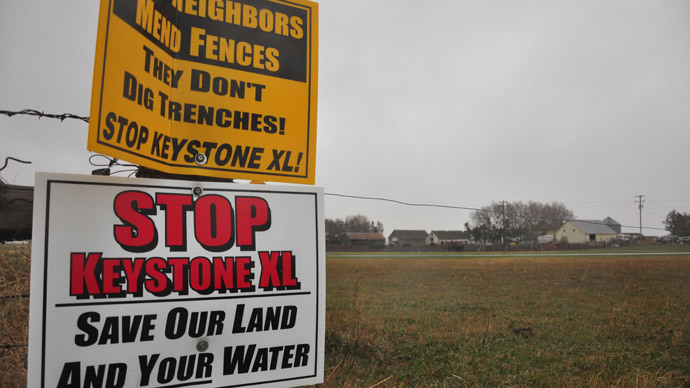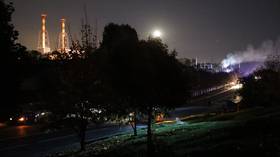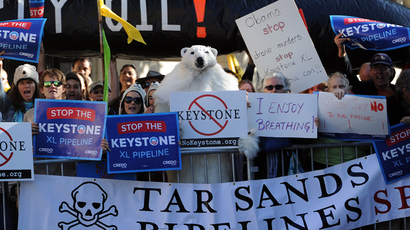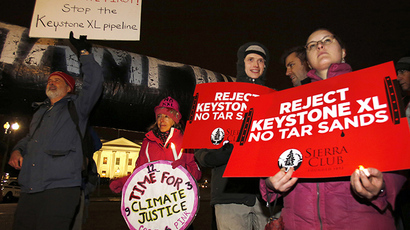Judge: Nebraska governor exceeded authority in approving Keystone pipeline

A judge has ruled against a Nebraska law that allowed the construction of the Keystone XL pipeline through the state in order to transport crude tar sands oil from western Canada to the Gulf Coast.
Lancaster County Judge Stephanie Stacy struck down Nebraska Gov. Dave Heineman’s approval of the pipeline route on Wednesday. Stacy said that jurisdiction over such a decision belongs to the pertinent state regulator, the Nebraska Public Service Commission.
Gov. Heineman said later Wednesday he would appeal the state court ruling, Reuters reported.
Three Nebraska landowners opposed to the pipeline filed the lawsuit.
"Under the Court's ruling, [pipeline owner] TransCanada has no approved route in Nebraska," Dave Domina, the landowners' attorney, said in a statement, according to AP. "TransCanada is not authorized to condemn the property against Nebraska landowners. The pipeline project is at standstill in this state."
AP reported that TransCanada could not be reached for comment.
In January 2013, Heineman sent a letter to President Barack Obama confirming that he would allow the controversial pipeline through the state. The decision came amid much opposition from landowners and others warning that the pipeline could contaminate the Ogallala aquifer, a major groundwater supply. Opponents said the governor did not have the authority to approve the route.
Heineman had opposed the pipeline running through the state’s Sandhills region, which is full of grassy sand dunes that are at high risk for erosion. Yet he said in the letter to Obama that the 195-mile route through Nebraska would avoid the area. He said any spills of the crude tar sands would be localized, and that TranCanada would fulfill cleanup responsibilities.
The ruling will likely cause further delays in completing the 1,179-mile, $7 billion pipeline.
Obama is expected to make a final decision on the pipeline by mid-2014. The southern leg of the pipeline began operations last month.
Much of the resistance to the pipeline centers around increased greenhouse gas emissions connected with crude tar sands development. This requires a more energy-intensive process than the production of plain crude oil, since a substance known as bitumen must be extracted from the Alberta tar sands through means such as surface mining or injecting steam into the ground.
Opponents of Keystone XL have several concerns regarding the pipeline – including the carbon-intensive impact from tar sands extraction, which they believe will worsen the effects of climate change. They are also concerned that the pipeline will put nearby communities at risk of oil spills into water supplies.
Critics have also pointed out that most of the oil that will travel through Keystone XL will go to growing economies overseas - like China - that have an increasing demand for more fossil fuels. The pipeline, detractors say, is unlikely to lower the price of gasoline in the US.
Proponents echo TransCanada and the Canadian government, saying the project will create tens of thousands of jobs for the communities near the pipeline in the US. The State Department has made a far more modest prediction, estimating that the pipeline will create an immediate 5,000 to 6,000 jobs. Others, however, have said that long-term job creation is nowhere near either estimate. President Obama said as much last March.
"The most realistic estimates are this might create maybe 2,000 jobs during the construction of the pipeline, which might take a year or two, and then after that we're talking about somewhere between 50 and 100 jobs in an economy of 150 million working people,” he said.
Late last month, the US State Department issued a report – prepared by a research company with ties to TransCanada – on the environmental impact of Keystone XL, raising few objections to the prospective ecological damage and harm to human health caused by the pipeline and its functions. While not taking a stance on the pipeline, the State Department said in the report that negating it would not impact the movement of oil from Alberta to Texas. It also suggested that it would be safer to transport 830,000 barrels per day (bpd) of crude by pipeline than by rail.















